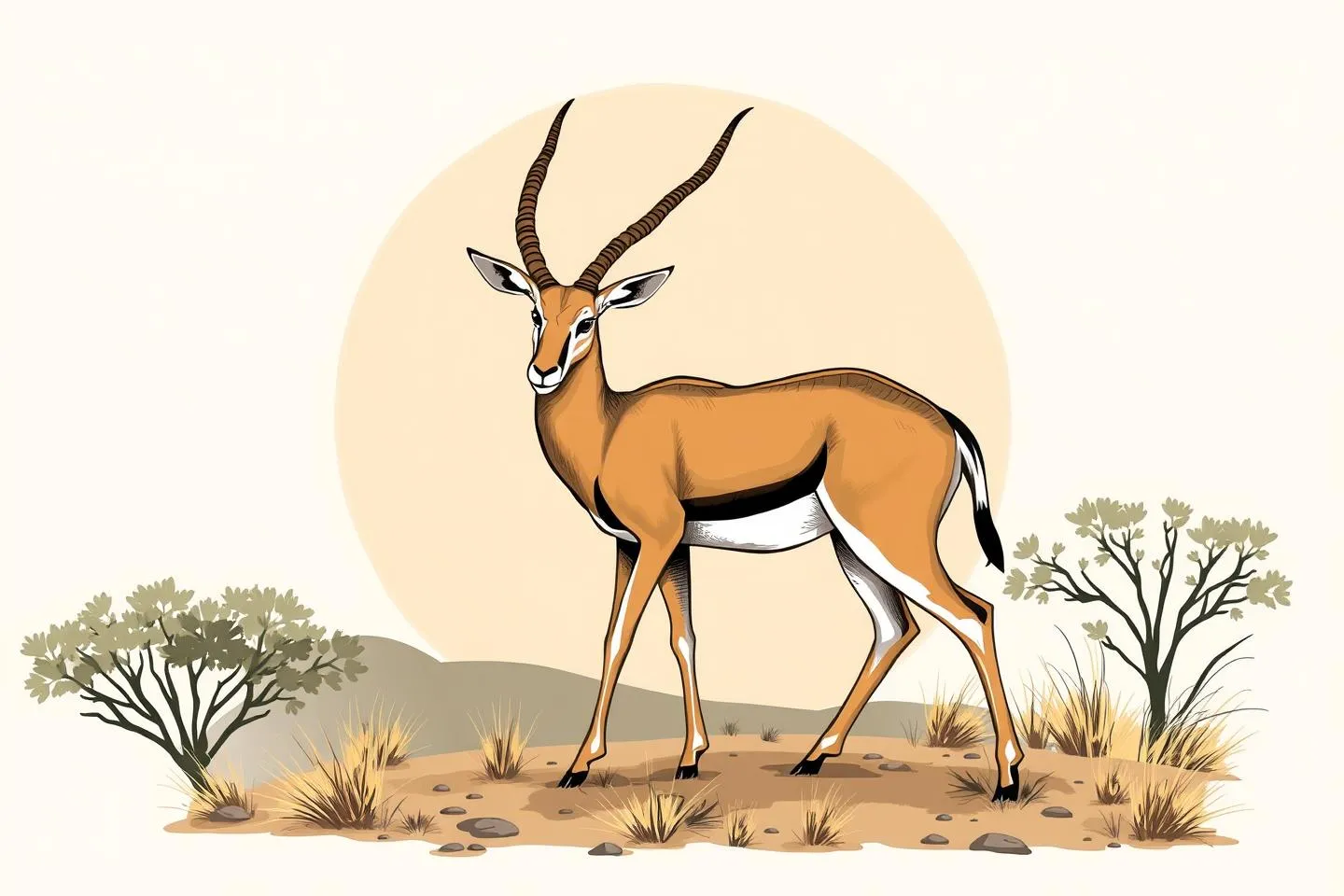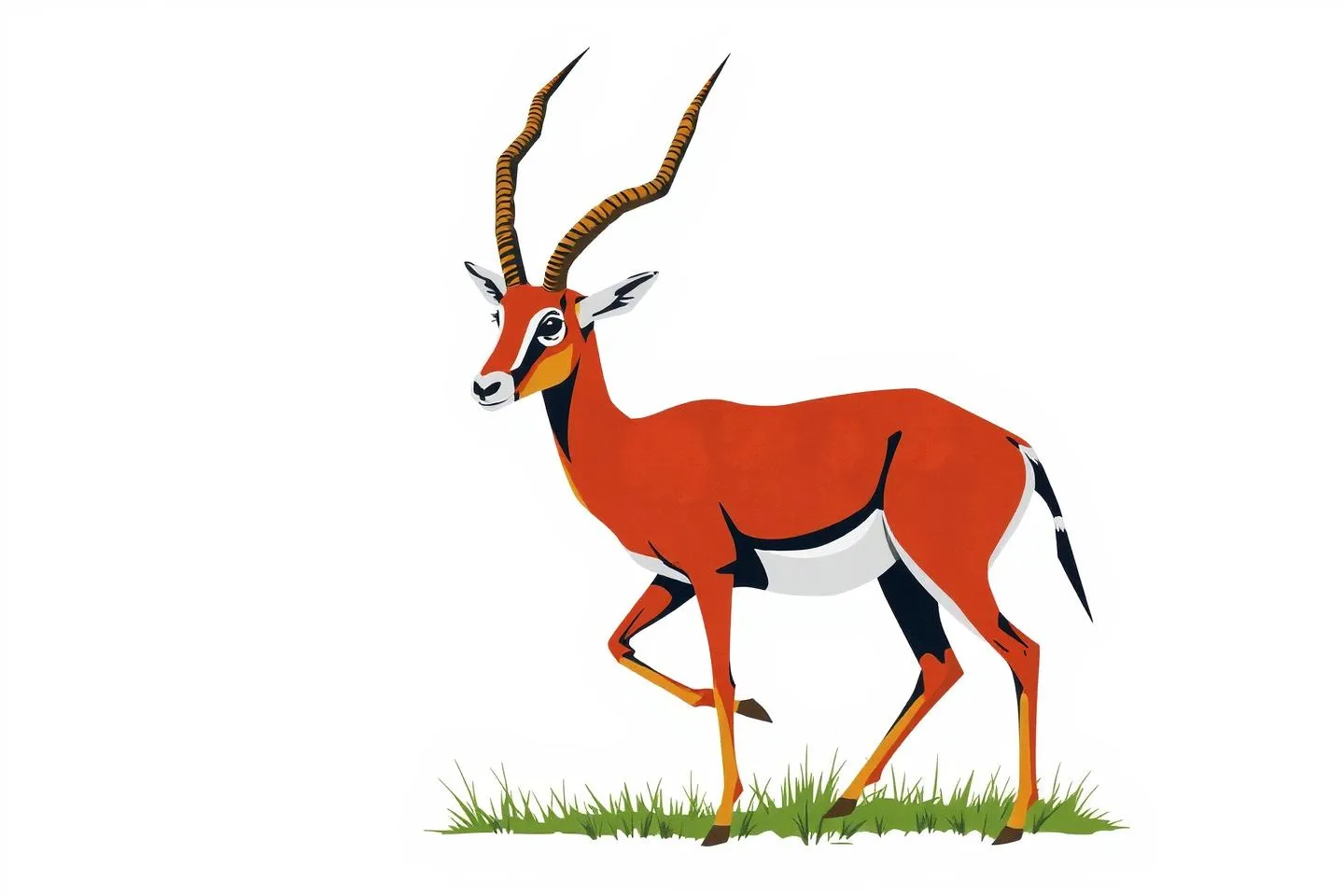Gazelle Symbolism: Grace, Speed, and Spiritual Insight

The gazelle, with its slender frame, swift movements, and gentle demeanor, has captivated human imagination for centuries. This elegant creature is more than just a symbol of the natural world; it carries profound meanings across cultures, religions, and artistic expressions. From ancient myths to modern media, the gazelle symbolism has evolved, offering timeless lessons about grace, agility, and the delicate balance of life.
The Ancient Roots of Gazelle Symbolism
Gazelles in Myths and Folklore
Gazelles have long been featured in the myths and folklore of various cultures. In Ancient Egypt, the gazelle was associated with the goddess Anuket, who symbolized the life-giving waters of the Nile. The Egyptians revered the gazelle for its grace and connection to fertility and abundance. Similarly, in African folklore, the gazelle often appears as a clever and resourceful character, outwitting larger, more powerful animals through its speed and wit.
In Middle Eastern traditions, the gazelle is a recurring motif in poetry and storytelling, often representing beauty and unattainable love. The famous “Gazelle and the Hunter” motif in Persian literature symbolizes the pursuit of the divine or the elusive nature of truth.
Evolution Across Cultures
As civilizations interacted and exchanged ideas, the symbolism of the gazelle spread and adapted. In Greek and Roman art, gazelles were depicted as companions to gods and goddesses, embodying purity and freedom. Over time, the gazelle became a universal symbol of grace under pressure and the ability to navigate life’s challenges with elegance.
The Core Symbolism of Gazelles

Traits That Define the Gazelle
The gazelle is often associated with grace, speed, and alertness. Its ability to move swiftly across the savannah while remaining poised is a metaphor for navigating life’s obstacles with ease. The gazelle’s keen senses and quick reflexes also symbolize vigilance and the importance of staying aware of one’s surroundings.
Natural Behaviors and Their Meanings
In the wild, gazelles are known for their herd mentality, which emphasizes community and cooperation. This behavior translates symbolically to the importance of unity and support systems in human life. Additionally, the gazelle’s ability to leap great distances is often interpreted as a sign of freedom and the pursuit of higher goals.
Cultural Interpretations
Different cultures have imbued the gazelle with unique meanings. In Native American traditions, the gazelle is seen as a messenger of peace and harmony. In Asian cultures, it symbolizes longevity and resilience, often appearing in art and literature as a creature that thrives in challenging environments.
Gazelles in the Modern World
Contemporary Art and Media
In today’s world, the gazelle continues to inspire artists and creators. Its image is frequently used in advertising to convey elegance and sophistication, particularly in the fashion and automotive industries. In film and literature, gazelles often appear as symbols of innocence or untamed beauty, reminding audiences of the delicate balance between humanity and nature.
Environmental Awareness
As the world becomes more conscious of environmental issues, the gazelle has emerged as a symbol of conservation and the need to protect vulnerable species. Its presence in wildlife documentaries and conservation campaigns highlights the importance of preserving natural habitats and biodiversity.
The Spiritual Significance of Gazelles
Gazelles in Religious Texts
Gazelles hold a special place in many religious traditions. In the Bible, the gazelle is mentioned as a symbol of beauty and swiftness, often used metaphorically to describe divine love or the soul’s journey. In Islamic tradition, the gazelle is associated with purity and is sometimes used to describe the beloved in Sufi poetry.
Ritualistic Uses and Ceremonies
In some cultures, gazelles have been used in rituals to invoke blessings or mark significant life events. For example, in certain African tribes, gazelle horns are worn as talismans to bring protection and good fortune. These practices underscore the deep spiritual connection between humans and this graceful creature.
Lessons from Gazelle Symbolism
The gazelle teaches us to move through life with grace and purpose, even in the face of adversity. Its ability to remain alert and agile serves as a reminder to stay mindful and adaptable. On a deeper level, the gazelle symbolizes the pursuit of spiritual enlightenment, encouraging us to leap toward higher truths and aspirations.
Related Themes and Practical Applications
Symbols Linked to Gazelles
The gazelle is often associated with freedom, agility, and gentleness. These themes resonate across cultures and time periods, making the gazelle a universal symbol of resilience and beauty. Its connection to the natural world also ties it to themes of harmony and balance.
Shared Interpretations
From ancient myths to modern media, the gazelle’s symbolism remains remarkably consistent. Whether depicted as a divine messenger, a poetic muse, or a conservation icon, the gazelle continues to inspire and captivate.
Applying Gazelle Symbolism in Daily Life
Incorporating the lessons of gazelle symbolism into our lives can be both empowering and transformative. By embracing the gazelle’s grace, we can navigate challenges with poise. By adopting its alertness, we can stay attuned to opportunities and threats. And by embodying its freedom, we can pursue our dreams with courage and determination.
Conclusion: The Timeless Allure of Gazelle Symbolism
The gazelle is more than just a graceful inhabitant of the savannah; it is a powerful symbol that transcends time and culture. Its representation in ancient myths, religious texts, and modern media underscores its enduring relevance. Whether as a metaphor for spiritual growth, a reminder of environmental stewardship, or an emblem of elegance and speed, the gazelle continues to inspire and teach us valuable lessons about life, resilience, and the pursuit of beauty.
By understanding and embracing gazelle symbolism, we can tap into a deeper connection with the natural world and ourselves, finding inspiration in the delicate yet powerful spirit of this remarkable creature.